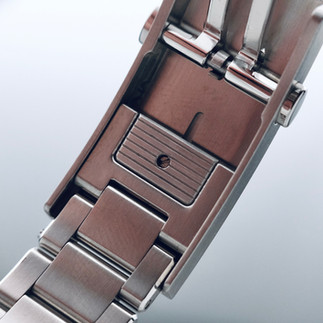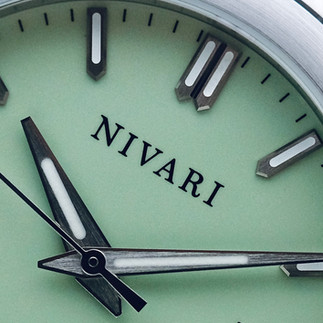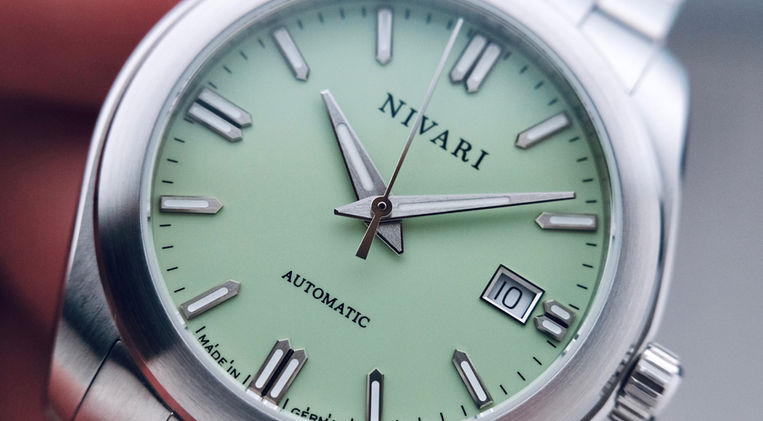Nivari Eden Pistachio
More than a Lofty Promise Delivered
August 22, 2025
Brands often balloon the value of their watches and most of them are convinced they have created the horological equivalent of the butter knife or Einstein’s General Relativity Theory. They are all special and feel special. But they mostly aren’t. Either they put forth the cutting-edge specifications of their watches—an incredible depth rating, superlative lume, the latest and greatest mechanical movement with 300 hours of power reserve, and even out-of-space case material which can sustain temperature variations of +/- 1,000 °C—or the singularity of their designs—something we’ve never seen before and won’t ever see again, watches that don’t necessitate hands to tell the time, etc.—and generally I find that none of this is true. Because the more they gloat over their own successes and being-the-first-in-doing-X, the less likely it is they have actually accomplished anything novel. Conversely, the more discreet a brand is, the more likely they are to have done something rather special. And today’s protagonist stands in the middle.
The brand is Nivari, the new kid on the block. Their first model is the Eden, the latest in the genre of elegant everyday watches. On the one hand, Nivari came to me saying they didn’t want to reinvent the wheel in terms of design. They wanted to do something classic and which we are all familiar with. On the other hand, they came to me saying that what they actually wanted to do was to offer a watch that is much superior in terms of manufacturing and finishing than any other watch in its price range—899€/$1,048 USD on pre-order and 1,249€/$1,456 USD full retail. With these prices Nivari is orbiting the mid-tier of micro/independent horology and therefore they better offer you more bangs for your bucks than you would expect, because these are not the prices amateurs of independent horology would deem reasonable for a brand they have never heard of to ask for their debut model. But it is bold and I like that a lot! Spoiler alert: Nivari has delivered on their promise and some.

Specifications
So already we’re going to delve into what the Nivari Eden is from mechanical and technical standpoints: indeed an everyday watch with sportive tendencies. This means, in Mainspring’s own vernacular, a watch that comes with enough of the good tech to ensure it functions well in all normal circumstances—anything but Special Forces and Astronauts training—whilst being comfortable to wear on average-sized wrists. All of this is subjective I know but right away I’ll explain what all that means. In terms of dimensions, and therefore everyday wearing comfort, the Eden inscribes itself without faults into the registry of modern and contemporary daily sports watches: 40mm in diameter, 45mm lug-to-lug, 9.9mm thick including the crystal, and a 20mm lug width. Pictured here on a 6.50”/16.5cm wrist, it wears incredibly well, commanding a noticeable wrist presence whilst never overdoing it, mostly on account of the reasonable L2L distance and meager thickness. An extra 2-3mm in length would have made the Nivari Eden too long in relation to its height and diameter.

And perhaps this is just me but lately brands have gone the route of shortening the wingspan of watches whilst maintaining their now ubiquitous 40mm diameter. It’s as if, for a watch to be considered an everyday sporty one, it still has to come with a diameter of 39/40mm, no less, no more. Between you and I, at first I was a tad skeptical reviewing such a watch coming with such dimensions because this combo tends to feel unnatural on my smaller flesh-and-bone apparatus, but the promise of exceptional manufacturing and finishing quality, as well as of superior fit and finish, got the best of me and here we are. So indeed the 316L stainless steel case and bracelet do come with a noticeable upgrade in the finishing department compared to what I usually see at this price point. To put things in perspective within the roster of watches I’ve written about for Mainspring, I would put it side-to-side to the Buci Garde-Temps ($1,300 USD on a strap,) Circula Facet Silver ($1,890 USD on a bracelet,) and DUG Typ 2 Purist ($1,476 USD on a bracelet.)

All three aforementioned watches are exceptional in their own rights. But I will tell you that the Nivari Eden does a few things extra they don’t: the bracelet for example is soft to the touch and has no sharp edges of any sorts, with a classic three-link construction and fully beveled outer links (very reminiscent of the Clemence Munro Cairn), and a fine clasp decorated with deep CNC-machined lines and equipped with a double-pusher deployant mechanism that is responsive and tactile, and a semi tool-less, semi on-the-fly micro-adjustment mechanism (the brand calls “EMS” for “Eden Micro-Adjustment System”) which is particularly smooth in operation. So the way the bracelet looks—with its male end-links and Oyster-style construction—isn’t novel, but it is indeed exceptionally executed here. And the same level of attention was invested in the manufacturing and finishing of each square micron of the case, with clean transitions between brushed and polished surfaces, and tight tolerances all around.
From a pure spec list perspective, we find: a Sellita SW200-1 caliber within (4Hz/42 hours of power reserve;) ample applications of SuperLuminova BGW9 on the hands and applied markers; 100 meters of water resistance (screw-down crown and case-back;) a flat piece of sapphire crystal with several layers of anti-relfective coating; a fully articulated bracelet and a micro-adjustment system which offers 10.5mm of travel, as well as quick-release spring-bars and screwed links; and as we already know, exceptional fit and finish on all parts. So already we see that Nivari did deliver on its promise to offer a watch that is mechanically sound and well-made, which isn’t always the case despite brands’ loftiest of promises. And as we know, Nivari didn’t intend to come up with a novel design—and we can appreciate their transparency here, I certainly do—although I would say that its aesthetic, despite not indeed being the horological equivalent of a breakthrough scientific discovery, is nevertheless utterly handsome and elegantly balanced.

Design
So a brand can repurpose commonplace design elements in order to create a new model, and that’s a practice we’ve seen since the invention of the first portable clock. So it’s fine folks. And the same can be said of any other type of machine or equipment we humans have made and sold for thousands of years, as the reality of life is that once in a while a few folks come up with a brand new idea that is repurposed thousands of times across time and space. (Read: across generations and borders.) I wouldn’t be able to tell you where Dauphine hands were first seen on a watch or when faceted markers made a first appearance on a timekeeping device. But I can certainly tell you this: all of what you see on the Eden, whether looking at the dial, case, or bracelet, is balanced, thoughtfully designed, and impeccably done. (Save for a few details, this is one of the best made prototypes I’ve ever seen which goes to show how much attention to detail Nivari poured into its first release.)

So, what do we have here? Firstly, a matte yet slightly enamel-like dial colored to resemble a delicious pistachio on top of which the brand’s logo and the words “Automatic” and “Made in Germany” are printed crisply in black. Then applied and beveled arrow-shaped hour markers with brushed upper sections and polished outer ones, all with plenty of real estate for lume in their center and doubled at the cardinal points. Already a visual bonus point goes for truncating the hour markers at the three (instead of doing without them) to make space for the framed date aperture, a polished and beveled framed to be precise, which perfectly integrates within the overall dial design. Then Dauphine hour and minute hands which are also beveled and showcase brushed upper sections and polished ones, where the polishing runs all around the hands as it does on the case sides, which we will be talking about shortly. Lastly, a needle-shaped and fully polished seconds hand complement the dial. A superb dial I would add and one which is more interesting to look at than what the brand makes it out to be.
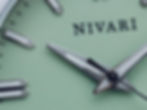
However much I can gloat over the dial, it is the case that took me by surprise. First on account of its perfect dimensions in relation to its profile, and second due to its superb finish. This means the design and finish of the case go hand-in-hand and hugely contribute to making the Nivari Eden stand out from the crowd of elegant everyday sports watches in the $1,500 USD price range. The best element of the case’s aesthetic are its sides, made of a horizontally brushed narrow mid-case which curves up and then down from its center, and which is surrounded by mirror-polished chamfers which run all around it. The chamfers below the case not only look superb but they also aid with the wearing comfort. Above the mid-case we find a flat and slightly domed fixed bezel, made of upper and lower radially brushed surfaces and a polished chamfer, the former being soft to the touch and easy on the eye, and the latter seamlessly pairing with the upper polished chamfer of the case.

The Heart of the Matter
The conventional horological wisdom dictates that a new micro/independent brand shouldn’t release a first model that retails for more than $1,000 USD. Why not? Well because that’s just wrong as we don’t know who they are, if the watch is worth anything, and if the brand will be around next Christmas. It sounds like a potentially risky investment of our hard-earned digital cash. But was the first Ferrari an entry-level car? The first iPhone a throwaway piece of telecommunication equipment? Of course not, so why would that be the case with the first collection from a new brand? Exactly, there isn’t any reason and that is the heart of the matter here: the Nivari Eden is the brand’s first collection and by the looks and specs of it, it’s rather good. Really good. The brand promised superior manufacturing and finishing and they delivered. And though the brand warned us the design doesn’t reinvent the wheel, I for one find it particularly well thought-out and executed. So it’s a promising debut collection and I hope loads of you will buy one.
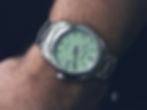
Conclusion
The Nivari Eden comes in four color variations—Pistachio as seen today, Smithsonite (light blue,) Obsidian (black) and a gorgeous Sakura with a floating petal texture—and will retail for 899€/$1,048 USD on pre-order by way of a Kickstarter campaign which will start on August 31, 2025,, and 1,249€/$1,456 USD full retail after that. Nivari expects to start delivering the watches in Q1 of 2026. If you go on the brand’s website right now, you will notice a $1 reservation system which has been active for a while and which will give you more bangs for your bucks compared to the Kickstarter campaign. But however you decide to pre-order your Eden, all watches will be delivered within the same time frame. Lastly, you should know that a lot of the parts the Eden are made of are fabricated in Germany, that the watches are assembled and QC’ed there, and that a portion of the sales will be donated to a non-profit organization. The brand will be sharing more information about the latter on its website soon.
So, pretty neat, isn’t it?
Thanks for reading.






